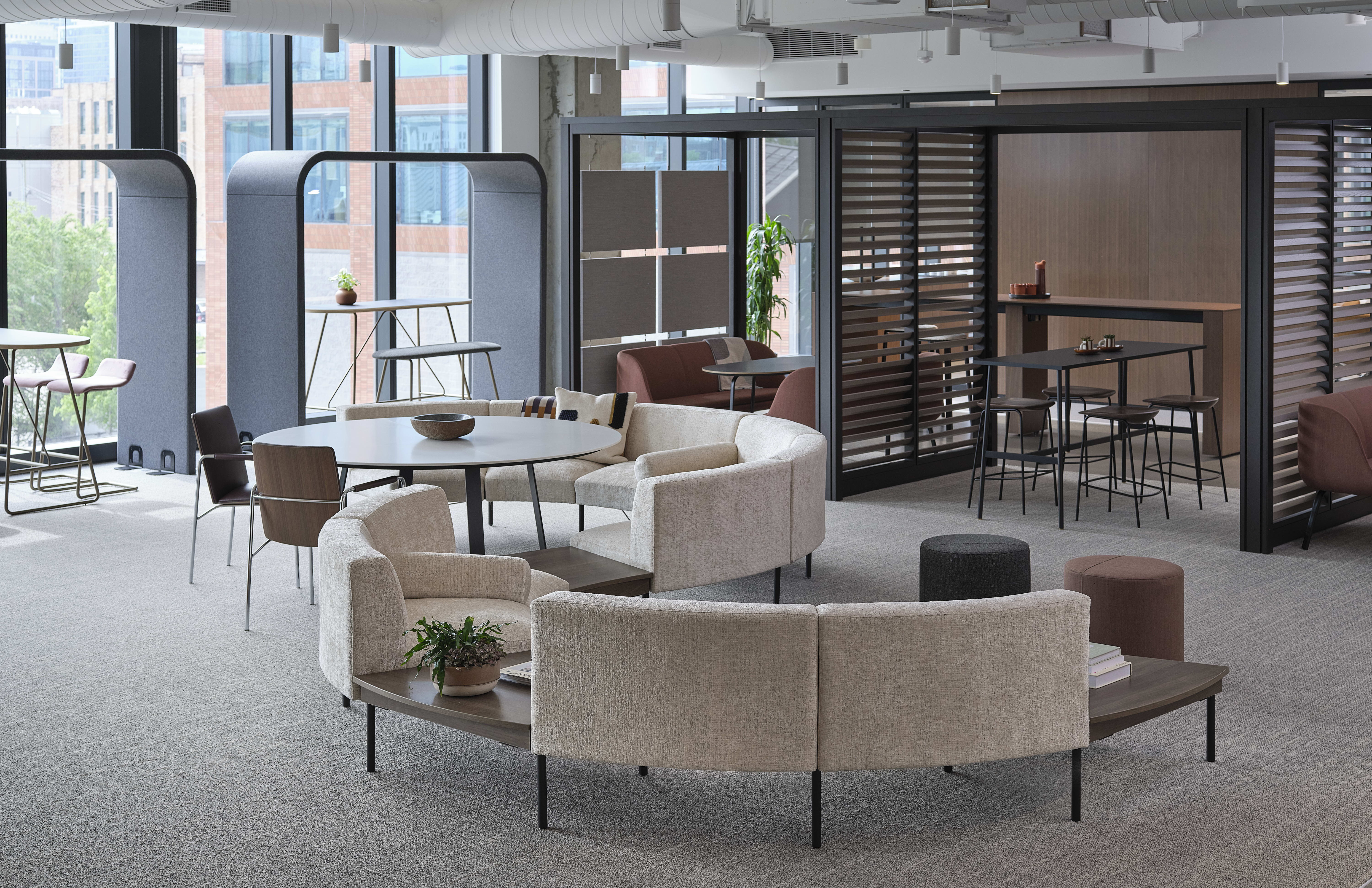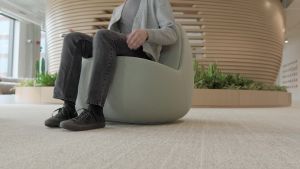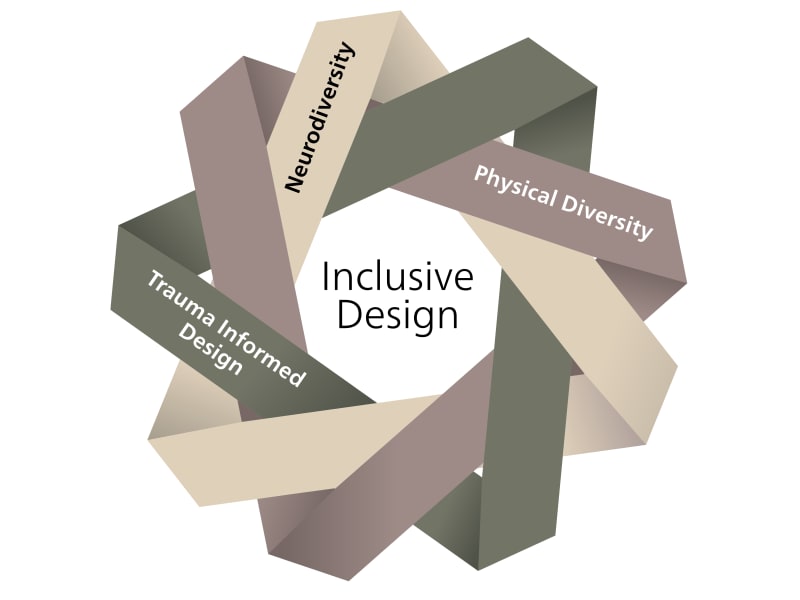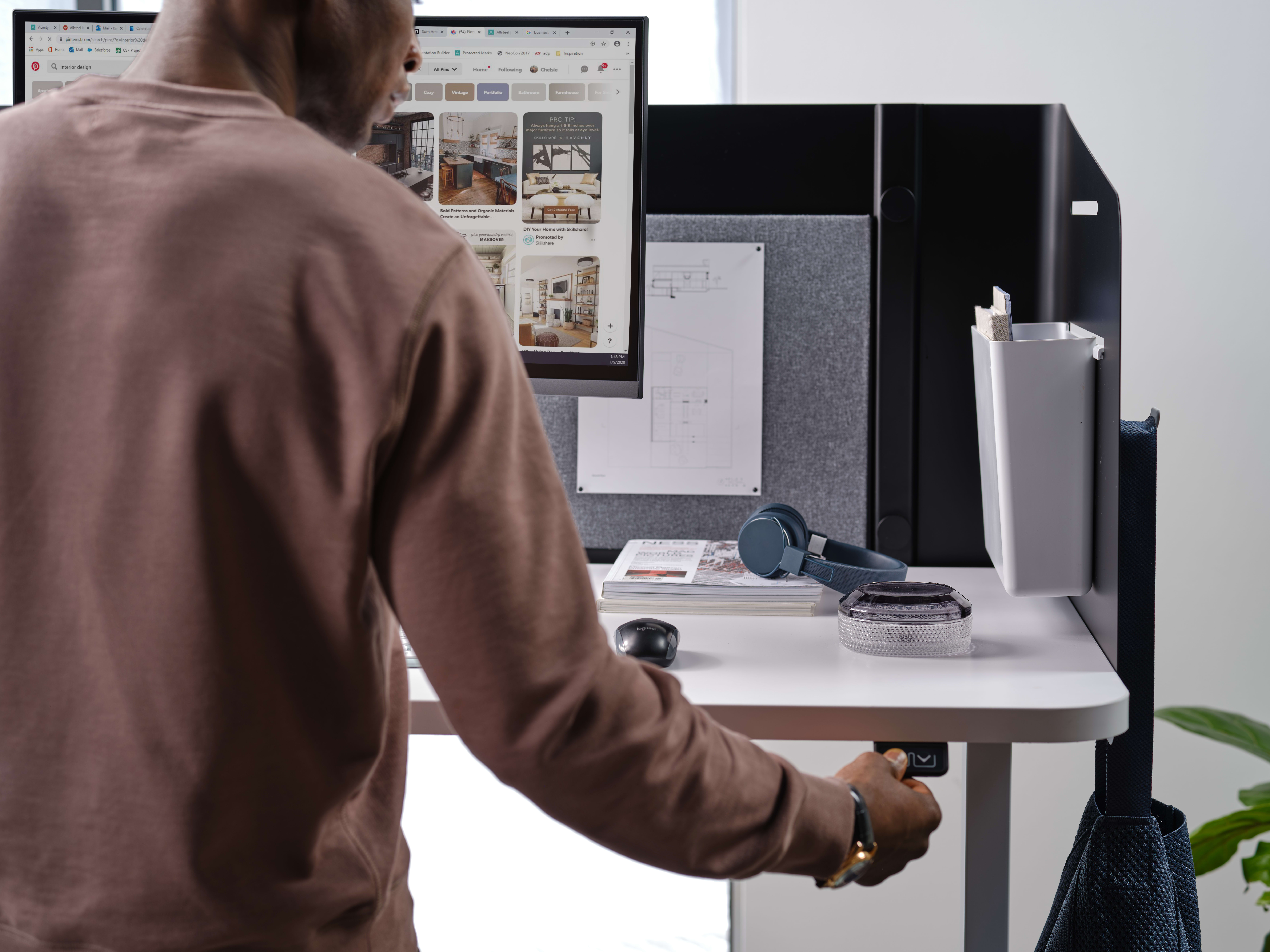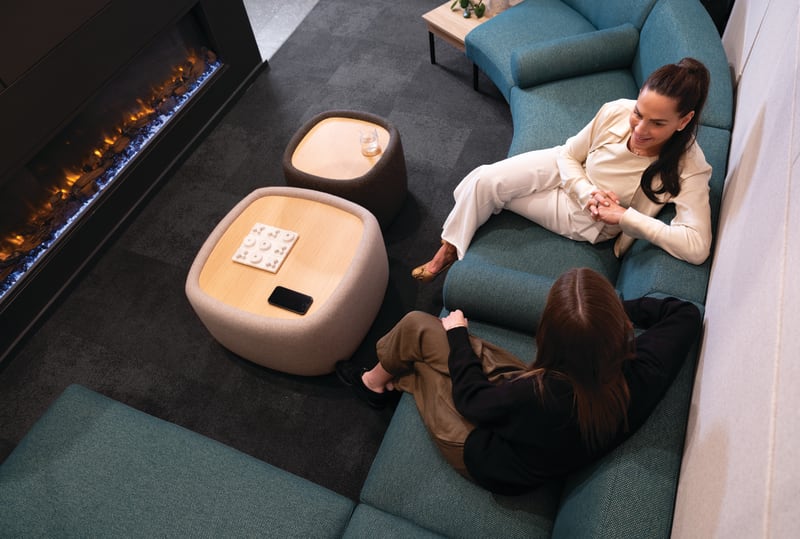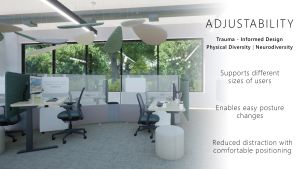When holistically integrated, Inclusive Design fosters support of a vast array of individual needs, communicates a sense of security, and permits employees to navigate easily.
Pillars of Inclusive Design
Inclusive Design means creating environments in which we all can feel safe and supported, which can empower employees to innovate, be creative, and show their unique perspectives.
Trauma Informed Design principles focus on constructing environments that are mindful of common trauma responses (fight, flight, freeze, and fawn). Minimize the risk of activating trauma responses and to allow individuals the spaces and tools to recover and regulate if needed.
Humans come in all shapes and sizes. We have differences in our strength, mobility, visual acuity, and age. Thoughtful consideration of ergonomics, accessibility, and work geometry can be applied to meet the needs of a physically diverse group of people.
Neurodiversity is an appreciation that there are vast differences in the ways our brains process inputs. Designing for a neurodiverse population involves consideration of sensory integration and the variety of interpretations of inputs for all five senses.
Psychological safety is an individual’s perception and individual, internalized assessment of their immediate surroundings. In simple terms, it’s how safe you feel being yourself.




